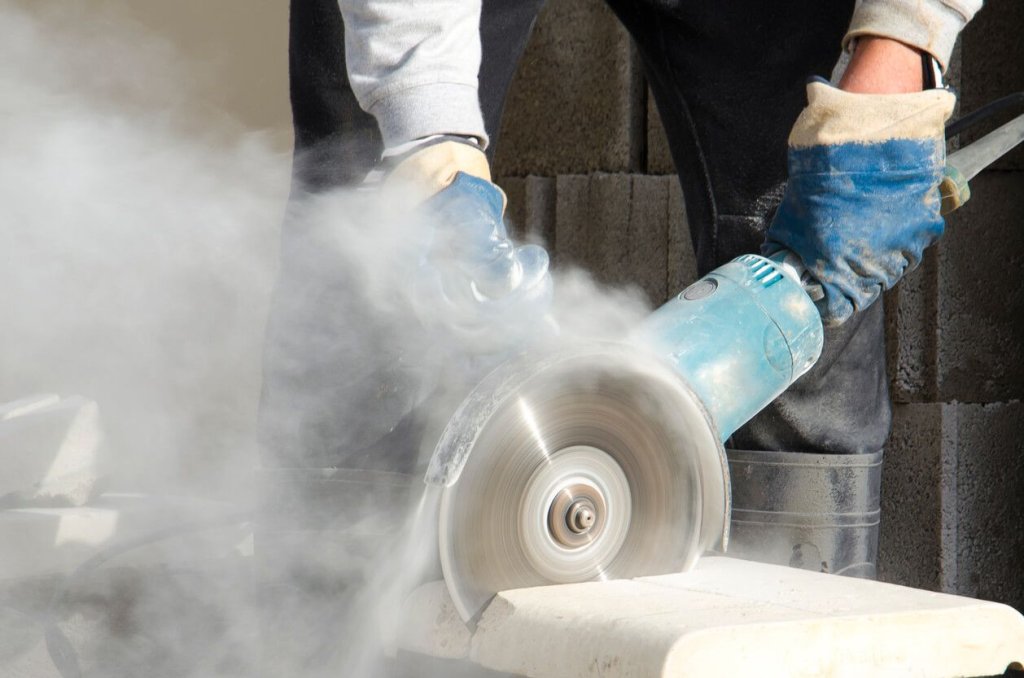Silicosis Safety Talk
With all the talk about silicosis in the news, OSHA has put out new regulations concerning silica dust and overexposure to it. This in turn has put more focus on the health hazards of silica dust by employers as well as employees. To prevent silicosis, it is important to first understand what silica dust is, how it silicosis is diagnosed, and the health effects it may have on your body.
What is Silica?
Silica is one of the most common minerals in the earth's crust, found in common materials like glass, beach sand, silicone, and granite. Crystalline silica—found in sand, gravel, clay, granite diatomaceous earth, and many other forms of rock—is the dangerous type of silica, as it is a health concern. When silica dust is created on a construction site (through actions like cutting, grinding, drilling, etc.) fine silica particles known as silica dust get airborne and are inhaled deep into the lungs where they cause damage.
What Is Silicosis?
Silicosis is a form of lung disease that is caused by inhaling silica dust. Over time, silica dust builds up in the lungs and breathing passages, which in turn leads to scarring, and makes it hard to breathe.
Most people who get silicosis are workers who have been exposed to silica dust at work. Jobs in mining, construction, plaster or drywall installation, sandblasting, and roofing may put you at higher risk for developing silicosis.
Three Types of Silicosis
There are 3 types of silicosis: acute, chronic, and accelerated.
Acute Silicosis
Acute silicosis is where symptoms happen a few weeks up to 3 years after exposure to a large amount of silica dust.
Chronic Silicosis
Chronic Silicosis is where problems may not show up until decades after they have been exposed to low or moderate amounts of silica dust. This is the most common type as symptoms may be mild at first and slowly worsen.
Accelerated Silicosis
Accelerated silicosis is where the symptoms become noticeable 5 to 10 years after heavy exposure to silica and they can worsen quickly.
What Are The Symptoms Of Silicosis?
Some early symptoms of silicosis can include:
Nagging cough
Phlegm
Trouble breathing
Some later symptoms of silicosis can include:
Trouble breathing
Fatigue
Weight loss
Chest pain
Fever that comes on suddenly
Shortness of breath
Swollen legs
Blue lips
If you have been exposed to silica dust and notice any of these symptoms, you should contact your health care provider immediately to get diagnosed.

How Is Silicosis Diagnosed?
When you visit your health care provider, they will listen to your concerns, check for symptoms, and they can also do tests that will help determine whether or not you have developed silicosis. These tests may include:
Chest x-rays or CT scan - this test can check your lungs for scars.
Bronchoscopy - with this test, the doctor will run a long, thin tube with a tiny camera on the end into your lungs and check for damage.
Biopsy - if a lung tissue biopsy is taken the doctor will guide a needle through the chest and into the lungs to take a sample of the nodule. Then it will be checked under a microscope for signs of silicosis.
Sputum test - this test is used to evaluate other lung diseases such as tuberculosis.
Treatment Options for Silicosis
While there is no cure for silicosis, there are treatment options that can help manage your symptoms. Possible treatment options include:
Medications such as inhaled steroids to reduce lung mucus and bronchodilators to help relax the breathing passages.
Oxygen therapy via a small portable tank that gives extra oxygen to help reduce fatigue.
Lung transplant surgery if the lung damage is severe.
One major lifestyle change that can help with silicosis is to stop smoking if you are a smoker. Smoking and secondhand smoke make the lung damage worse.
If you suspect you have silicosis, it is important to see a healthcare provider to get a proper diagnosis and to come up with a treatment plan.
How to Prevent Silicosis
The only way to prevent silicosis is to reduce exposure to silica dust. On the jobsite, you can prevent silicosis by doing the following:
Limit the time you are exposed to silica
Wear a mask or other protective clothing when you work around silica dust
Use proper ventilation
Use wet methods to cut, chop and grind materials that contain silica
Swap materials that contain silica for materials that do not
Use respirators when working with materials that contain silica
Do not eat or drink near silica dust
Wash your hands and face before you eat if you have been around dust
Shower and change clothes immediately after work
Use collection or vacuum systems when available
Stay out of areas that contain silica dust, also beware of being downwind from these areas
Take Charge & Be Mindful of Silicosis Risks
When working with materials that contain silica dust, it is important to know your health risks as well as the risk to others. You should always be aware of the materials you are working with and ways to prevent the dust from spreading. Should you have any questions or concerns about the construction materials you are working with or what safety precautions you should be taking on a job site, ask your foreman for more clarification.
If you believe you have been overexposed to silica dust you should make an appointment with your health care provider and you should always get periodic medical exams if you continue to be exposed. Remember your health is important and to take care of yourself.
Find and schedule topics faster
Raken's toolbox talk app makes it easy to choose from a pre-loaded library (or upload your own), then schedule and assign topics for any project. We'd love to show you how in a demo, and get you started on a free trial.